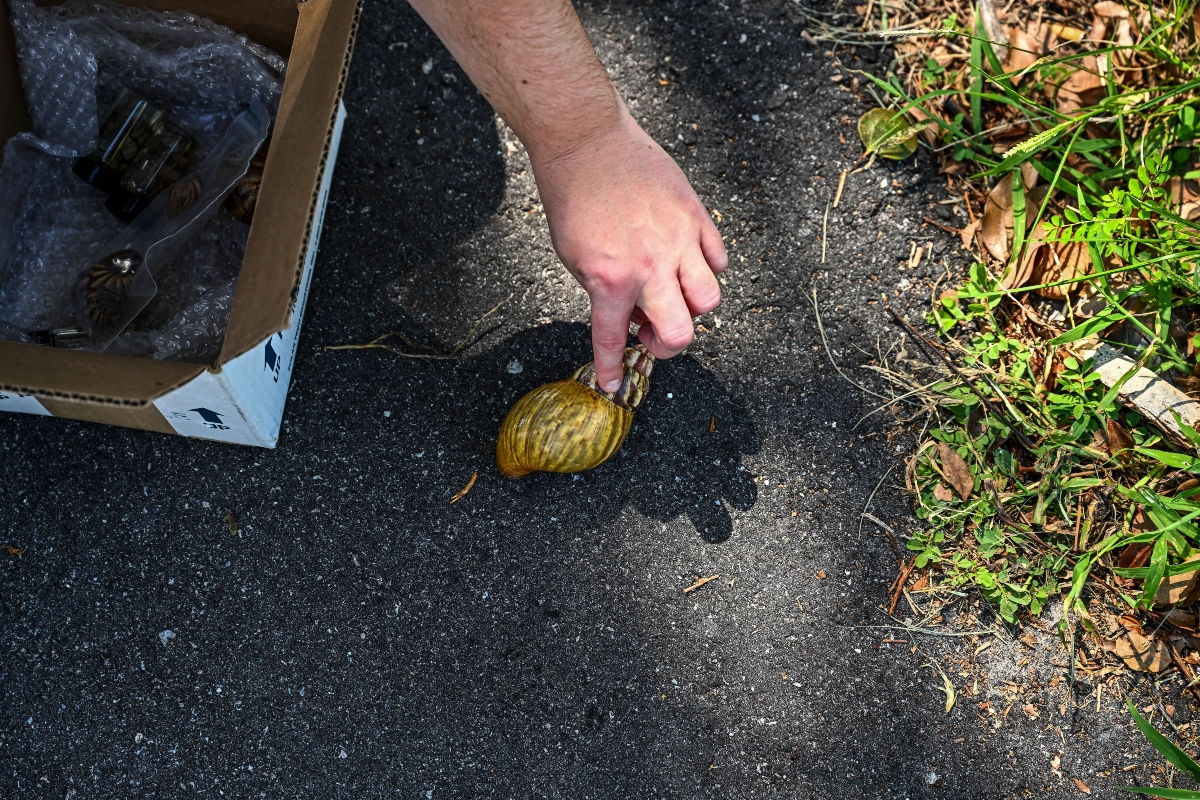(Trends Wide Spanish) — At the beginning of June, a giant African land snail was detected in Miramar, a neighboring city of Miami. This alert led the authorities of the Florida Department of Agriculture and Consumer Services (FDACS) to carry out a more exhaustive inspection that revealed the detection of more of these mollusks.
Immediately, the Department of Agriculture and its Plant Industry division demarcated a zone and established quarantine and treatment in specific areas of Broward County.
What is the quarantine?

Giant African land snails identified by the Florida Department of Agriculture and Consumer Services on September 15, 2011 in Miami.
Once the first specimen was observed, the authorities carried out a detailed inspection. Subsequently, they determined the area to be treated, which includes properties where snails have been found and properties located within almost 200 meters of the detection of the mollusk.
The FDACS explains that during quarantine it is prohibited—without prior compliance agreement—to move a giant African land snail or a regulated article, including, but not limited to, plants or parts thereof, plants in soil, soil, yard waste, debris, compost or construction materials in the defined quarantine area.
The treatment
The quarantined area, according to the FDACS, is being treated with a metaldehyde-based shellfish pesticide that is approved by the US Environmental Protection Agency for residential use.
Metaldehyde is a bait that works by disrupting the mucus-producing ability of snails and slugs, which, when consumed, often seek hiding places, become inactive, and begin to die within days.

Scientist Mary Yong Cong holds one of the giant African snails she keeps in her lab in Miami, Florida, on July 17, 2015. (Credit: KERRY SHERIDAN/AFP via Getty Images)
This pesticide is also approved for use on a variety of fruit and vegetable crops, as well as on some plantations and in limited residential areas.
Property owners within the quarantine area are notified 24 hours prior to the start of treatment. However, to successfully eradicate the plague, a total of 26 treatments are required, initially applied every 14 days and subsequently monthly until the check-ups and the snail-detecting dog show negative results.
The giant African land snail
The giant African land snail can be up to 20 centimeters long, that is, slightly larger than an average adult hand, and can produce about 1,200 eggs in a single year.
This mollusk is considered one of the most harmful snails in the world. It feeds on more than 500 types of plants, including peanuts, beans, peas, cucumbers, and melons. But if fruits or vegetables are not available, snails can eat a wide variety of ornamental plants, as well as tree bark and even house paint and stucco.
According to the FDACS, this species has already been eradicated twice in the state. The first time was in 1975, whose process lasted six years; and the second, in 2021, in Miami-Dade County, whose eradication took about 10 years.






